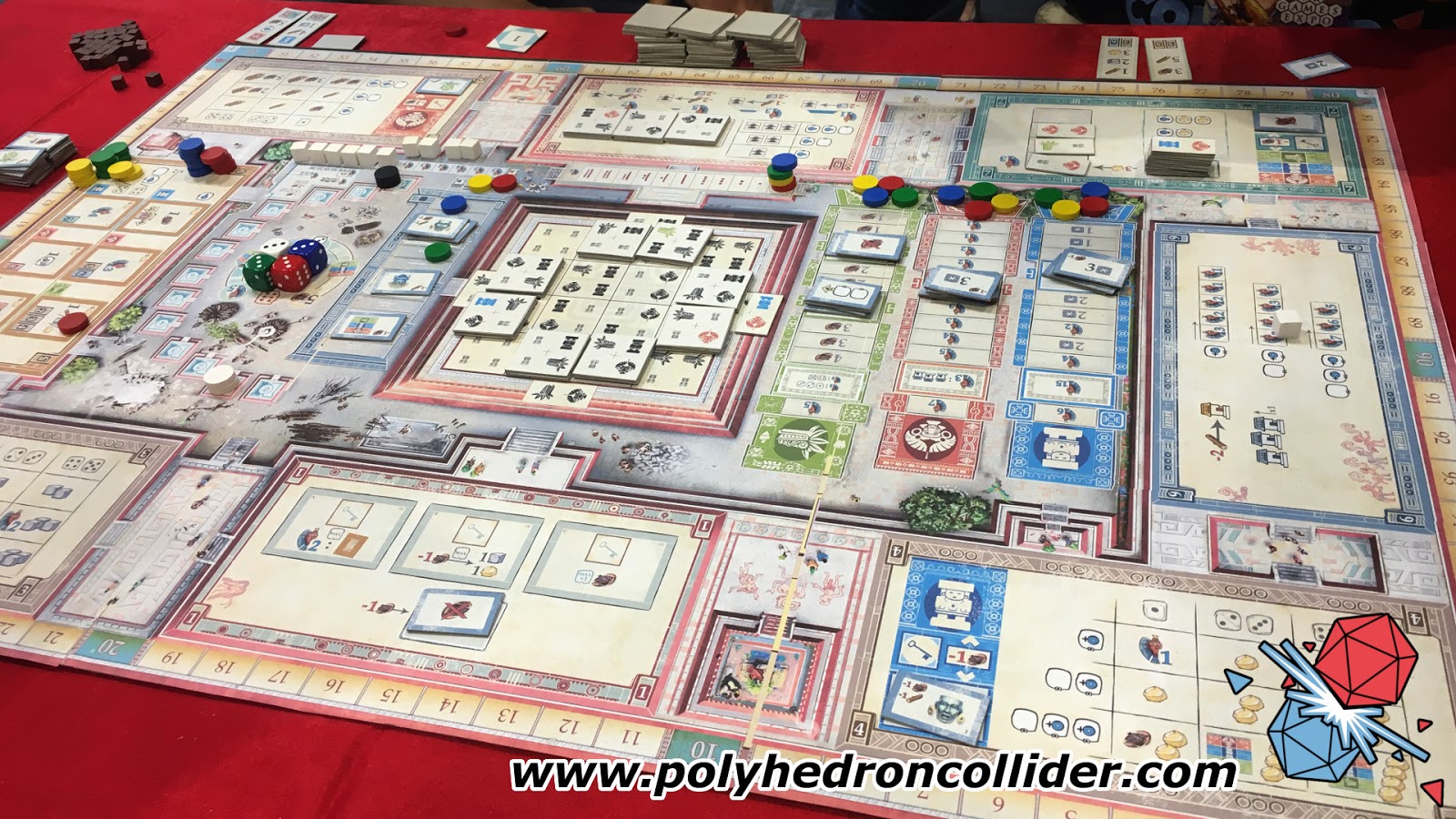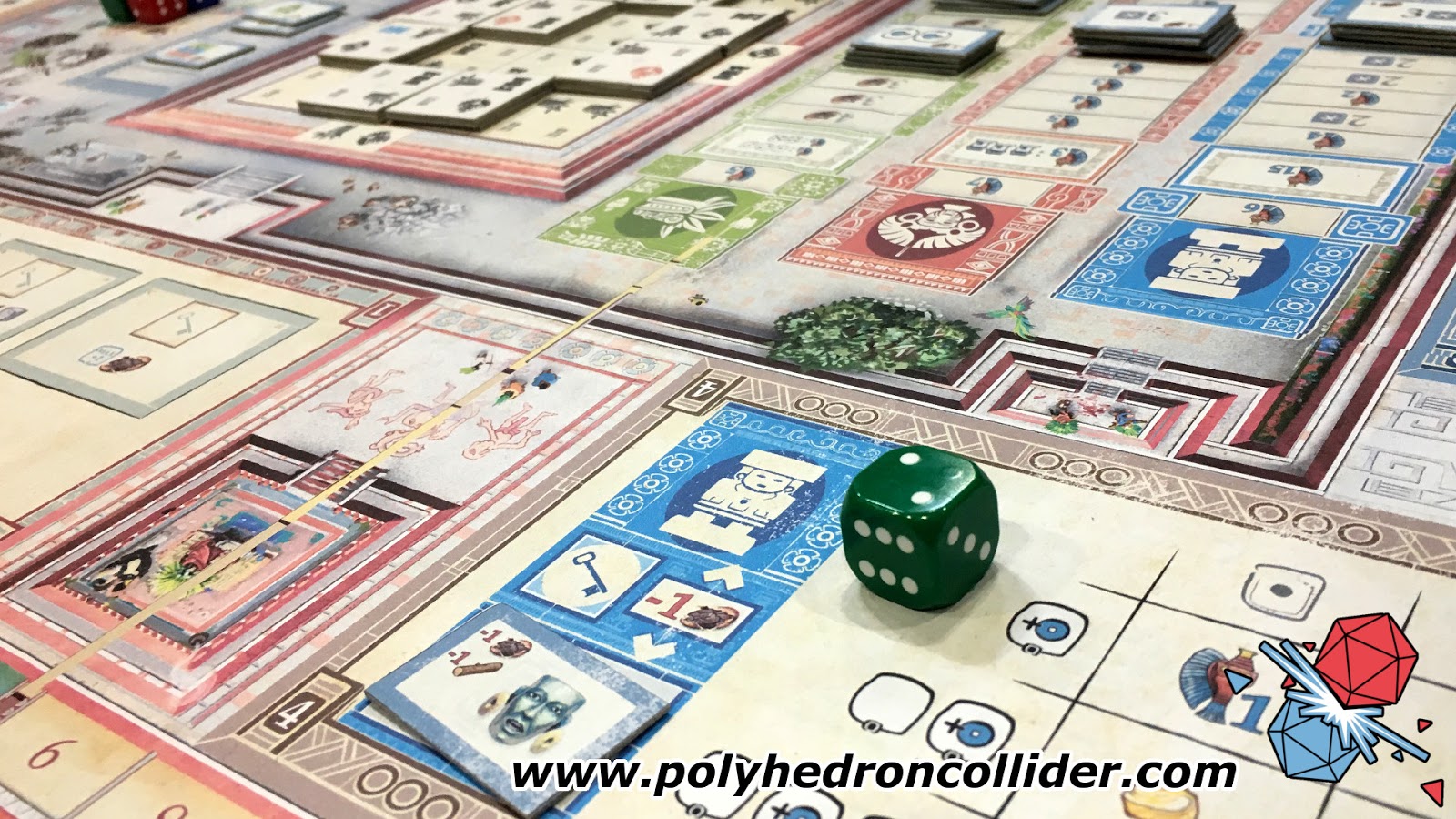According to my GCSE results, I speak better French than I do English. I’m not going to contest this because I’m from the North and my rough, no-nonsense accent will likely confuse the Southerners speaking with their plums in their mouths. A particularly awkward place to put one’s plums I might add.
One language I’m demonstrably not great at is Mesoamerican and I have two pieces of evidence to back up this outlandish statement. One; the well-travelled lads here at Polyhedron Collider struggled to pronounce Teotihuacan the first few (hundred) times, resorting to referring to it as “Twatty-Haduken” (anyone who’s played Street Fighter will get the reference) and two; David Turczi himself stopped me at UK Games Expo this year to give me language lessons on how to do it properly.
One language I’m demonstrably not great at is Mesoamerican and I have two pieces of evidence to back up this outlandish statement. One; the well-travelled lads here at Polyhedron Collider struggled to pronounce Teotihuacan the first few (hundred) times, resorting to referring to it as “Twatty-Haduken” (anyone who’s played Street Fighter will get the reference) and two; David Turczi himself stopped me at UK Games Expo this year to give me language lessons on how to do it properly.
Suitably embarrassed, I made my way to the NSKN table with our leek-loving leader, Steve, to give she-who-shall-not-be-pronounced a jolly good run through. Given I’d seen a little of Teotihuacan ahead of this brief encounter, I was a little excited at the prospect.
Teotihuacan is a spiritual successor to Tzolk’in, designed by the same chap (Daniele Tascini) and you can definitely tell. Now, I rather love Tzolk’in, so I had high hopes for Teotihuacan. Whilst the rules were explained to us, I had a quick shufty at the board: a Rondel of spaces around the outside, a veritable bounty of staged tracks in the middle and the crowning (off-) center-piece; the pyramid.
Players have a bunch of D6 which act as workers that can take advantage of the spaces on the Rondel; each space allowing them to do certain things like gather resources, join the YTS to get better at bricklaying, bag the short-term bonus on offer or build the pyramid. The latter action is the most satisfying as you play lego with the hefty wooden blocks in the game to build a physical structure on the board, which looks awesome.
Workers already on the Rondel location mean it’s more expensive to use so finding a space less crowded is certainly worth doing. Grab your resources to allow you to build or pray to the gods for bonuses. Reach nirvana (6 on the D6) by learning more and you get big bonuses, although your worker retires in favour of another spotty youth fresh out of school, ready to be trained up.
Teotihuacan is split into three phases (compared to Tzolk’in’s two), each progressively shorter than the last. Highest VPs at the end win, just like Tzolk’in, but the array of points scoring (the fabled points-salad) makes Teotihuacan so varied. I should point out that we only played the first phase during the demo, which took about an hour with the rules learning in too. The four around the table took the game quite readily (we were all Tzolk’in veterans) and Teotihuacan rattled along quite nicely. It’s smooth, straightforward to play and feels great.
Towards the end of the demo we all agreed to stop at the end of the 1st phase as it made sense. The chap demo’ing it looked visibly concerned as we stood up to which we all responded “don’t worry, we’re all going to buy it”. Which as far as demo’s go is a bit of a ringing endorsement.
Needless to say, we very much enjoyed Teotihuacan and I myself have already pre-ordered it.
I suggest you do the same, or at the very least check it out at Essen. Then buy it.
This preview is based on a one-hour demonstration of the game at UK Games Expo.




Comments
Post a Comment